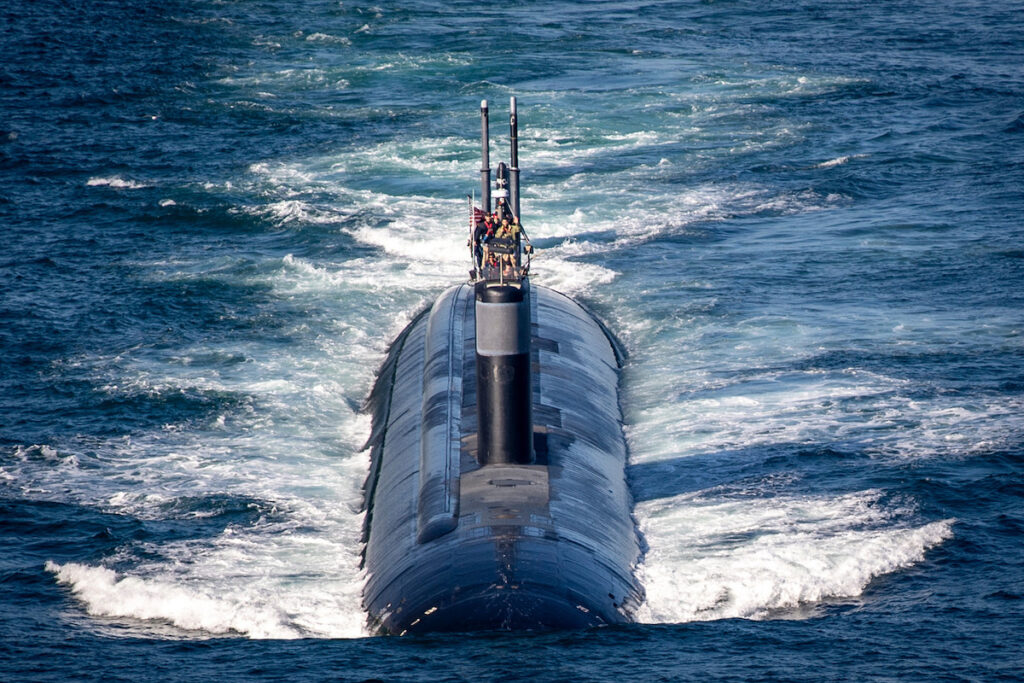A widening gap between US submarine ambitions and industrial capacity is reshaping the undersea balance just as China accelerates its challenge beneath the waves.
This month, the US Congressional Research Service (CRS) noted that the US Navy has deferred procurement of its next-generation attack submarine, the SSN(X), from fiscal year 2035 to 2040 due to overall budget constraints, as stated in the Navy’s FY2025 30-year shipbuilding plan.
The delay raises concerns about a critical production gap following the completion of the Columbia-class line and threatens continuity in the submarine industrial base. The Congressional Budget Office (CBO) estimates the average unit cost of the SSN(X) at US$8.7 billion, 23% higher than the Navy’s own $7.1 billion projection.
Designed to exceed adversaries in speed, stealth, payload capacity and autonomous system integration, the SSN(X) draws on traits from the Seawolf, Virginia and Columbia classes, with CBO estimating a displacement of roughly 10,100 tons.
The deferral has reignited debate over propulsion choices, but the US Navy maintains its opposition to low-enriched uranium (LEU), citing endurance losses, developmental uncertainties and a potential 20–30-year, $25 billion timeline for an alternative fuel system.
General Dynamics Electric Boat and Huntington Ingalls Industries (HII) are expected to share construction duties, but the five-year delay casts doubt on workforce retention and supplier viability. Congress faces growing pressure to reconcile fiscal constraints with strategic imperatives as China accelerates its undersea buildup.
The deferral underscores a growing mismatch between strategic urgency and industrial capacity, exposing vulnerabilities in undersea readiness just as China ramps up its naval modernization. Production bottlenecks, workforce attrition and tight budgets are converging to undermine the one domain where the US has still retained its clear advantage.
Underscoring this strategic importance, William Toti writes in a December 2023 Proceedings article that US attack submarines (SSNs) will serve as the linchpin of undersea dominance in a Taiwan Strait crisis, conducting high-risk anti-surface warfare (ASuW) to blunt China’s potential invasion or blockade.
He notes that SSNs can operate covertly in shallow, contested waters, striking People’s Liberation Army-Navy (PLAN) amphibious vessels and aircraft carriers with torpedoes while remaining undetected. Their stealth, he argues, allows early deployment without escalating tensions, though their limited numbers highlight dangerous shortfalls.
Toti emphasizes that with US air power likely constrained and surface forces withheld in early stages of a conflict, SSNs may constitute the only decisive maritime counterforce. He calls for expanding the submarine fleet, speeding up weapons production and prioritizing ASuW readiness in anticipation of Indo-Pacific contingencies.
However, even the world’s best submarines may face formidable odds. Bryan Clark writes in a December 2022 Hudson Institute article that China’s layered anti-submarine warfare (ASW) network—including passive seabed sensors, low-frequency active sonar, ASW missiles and mines—could expose and suppress US submarines in contested waters.
Clark warns that China’s growing fleet of modern conventional submarines, including the air-independent propulsion (AIP)-equipped Yuan-class, may overwhelm US ASW capabilities at chokepoints like the Miyako and Luzon straits. Without integrating unmanned systems such as relocatable sonar arrays and unmanned surface vessels (USVs) with towed sensors, he says, the US Navy risks tactical paralysis.
Meanwhile, the US submarine force is overstretched. Jerry Hendrix notes in a 2024 American Affairs article that the Navy’s current fleet of 53 fast-attack submarines suffers from chronic maintenance delays, with nearly a third sidelined.
He argues that these issues diminish operational readiness, reduce surge capacity during crises and compromise deterrence credibility. He adds that US submarines often must enter contested zones ahead of surface or air forces, making their availability critical.
Further, a February 2025 US Government Accountability Office (GAO) report highlights persistent delays in shipbuilding, noting that from 2019 to 2023, the US Navy significantly underdelivered Virginia-class submarines compared to its shipbuilding plans from FY2019 to FY2023.
The report identifies workforce shortages, supplier constraints and overly optimistic schedule assumptions as key contributors. The report states that the Columbia-class program also faces risks due to industrial base limitations.
GAO criticizes the lack of performance metrics and coordination in Navy investments, warning that without structural reforms and sustained workforce development, the Navy may struggle to meet future shipbuilding goals.
By contrast, Sarah Kirchberger writes in a September 2023 China Maritime Studies Institute (CMSI) report that China’s submarine industrial base has expanded rapidly due to massive state investment, civil-military integration and modular shipbuilding practices.
She notes that major shipyards such as Bohai and Wuchang have significantly increased construction capacity, positioning them to support the development of strategic platforms like the Type 095 and Type 096.
However, Kirchberger cautions that China continues to lag in key technological areas, including nuclear propulsion, acoustic quieting, and advanced materials—factors that directly impact submarine stealth and survivability.
She adds that China still relies on foreign—particularly Russian—technologies, and that limited transparency hinders external assessments of its actual capabilities. While China’s progress in scaling production is notable, Kirchberger argues that persistent technical shortfalls limit its ability to challenge US undersea dominance in the near term.
Reinforcing this view, Ryan Martinson notes in a June 2025 Center for International Maritime Security (CIMSEC) article that Chinese submarines face “extremely high” detection risks immediately after leaving port due to the US Navy’s three-dimensional undersea surveillance network.
He describes a system combining seabed sensors, ASW aircraft, satellites, unmanned underwater vehicles (UUVs) and sonar-equipped vessels across the First Island Chain.
Martinson adds that PLAN experts themselves admit interception risks remain high even in China’s “near seas,” raising doubts about strategic utility and nuclear deterrence. The saturated acoustic environment, he says, renders Chinese submarines effectively “not-so-silent,” limiting their survivability and wartime deployment.
Ultimately, the US’s edge beneath the waves is eroding not from enemy fire, but from self-inflicted industrial stagnation and delay. Unless urgently addressed, these setbacks could hand China a dangerous opportunity in the Indo-Pacific and a potential Taiwan war win.

